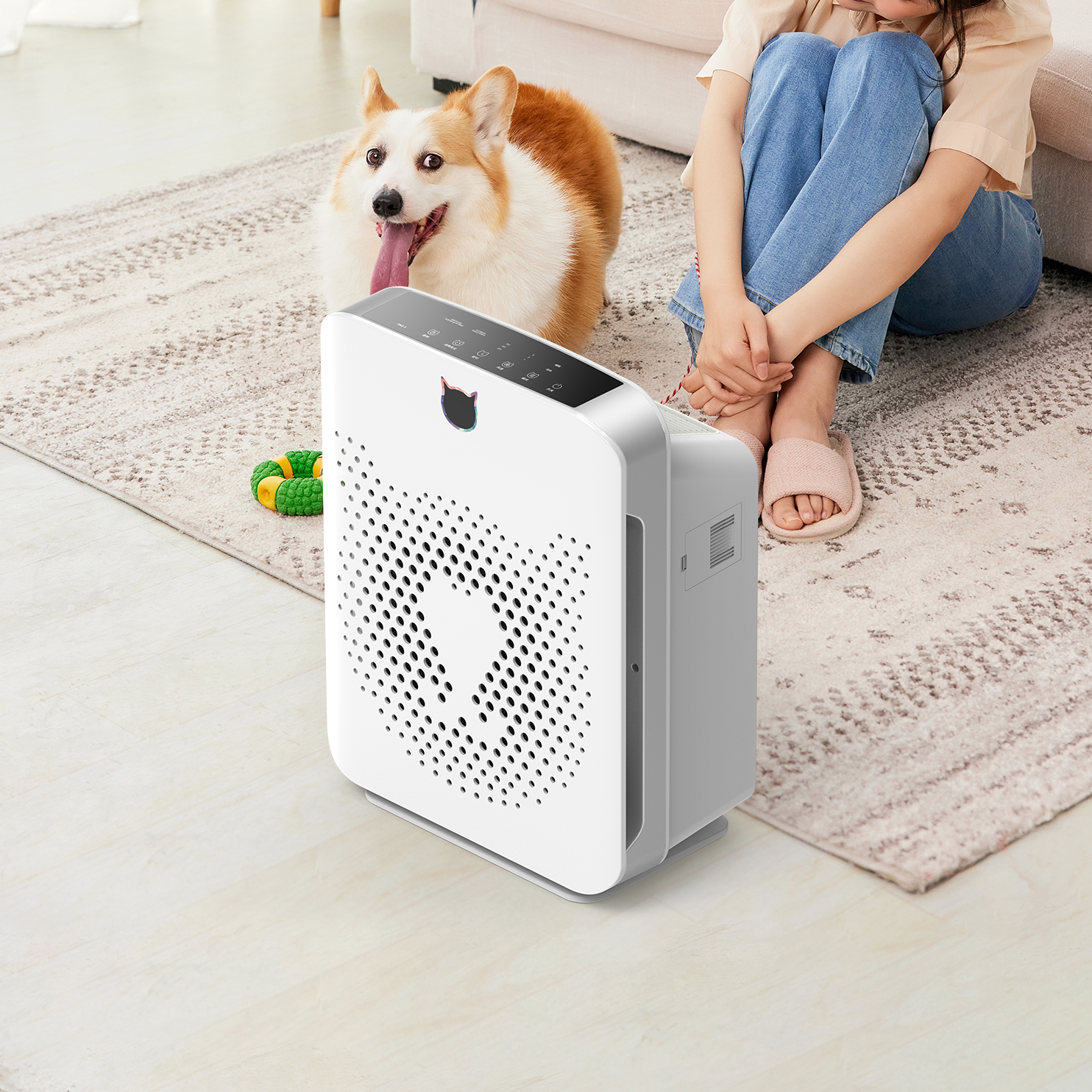How Do Air Cleaners Work to Improve Indoor Air Quality?
The Science Behind Cleaner Indoor Environments
Modern air cleaners utilize advanced filtration technologies to remove harmful contaminants from indoor spaces where people spend the majority of their time. These devices actively process room air through multiple stages of purification to capture particles, neutralize odors, and destroy microorganisms. Air cleaners work continuously to improve indoor air quality by reducing concentrations of allergens, volatile organic compounds, and airborne pathogens that accumulate in homes and offices. Different types of air cleaners employ specialized approaches to address specific air quality concerns, from HEPA filtration for particulate matter to UV-C light for germicidal action. The effectiveness of an air cleaner depends on properly matching its technology to the size of the space and the particular pollutants needing removal. Understanding how these systems function helps consumers select the right air cleaners for their unique indoor environment challenges.
Mechanical Filtration Systems
HEPA Filtration Technology
High Efficiency Particulate Air (HEPA) filters in air cleaners capture 99.97% of particles as small as 0.3 microns through a dense web of microscopic fibers. As air passes through these filters, particles become trapped via three mechanisms - interception, impaction, and diffusion. HEPA-equipped air cleaners effectively remove pollen, dust mites, pet dander, and other common allergens from circulation. The filters work particularly well for people with respiratory conditions who need clean air free of particulate triggers. True HEPA filtration in air cleaners requires regular replacement to maintain peak performance as loaded filters become less effective over time. This mechanical filtration forms the foundation of most high-performance air cleaning systems for homes and workplaces.
Activated Carbon Filtration
Air cleaners incorporate activated carbon filters to adsorb gases, odors, and volatile organic compounds that HEPA filters cannot capture. The porous structure of activated carbon provides an enormous surface area that chemically bonds with airborne molecules. Air cleaners with substantial carbon filters effectively reduce cooking odors, tobacco smoke, and chemical fumes from cleaning products or building materials. The best systems position carbon filters downstream from particulate filters to prevent clogging of the carbon's porous structure. Some advanced air cleaners use specially treated carbon that targets specific pollutants like formaldehyde or nitrogen dioxide. This chemical filtration complements mechanical systems to provide comprehensive air cleaning for modern indoor environments.

Electronic Air Cleaning Technologies
Ionization and Electrostatic Precipitation
Certain air cleaners generate charged ions that attach to airborne particles, causing them to cluster together or adhere to collector plates. Negative ion generators help particles settle out of the air more quickly, though they don't actually remove contaminants from the environment. Electrostatic precipitators in air cleaners use charged plates to actively capture ionized particles as air flows through the device. These technologies can effectively reduce smoke and ultrafine particles that mechanical filters might miss. However, some air cleaners using ionization produce trace amounts of ozone as a byproduct, requiring careful evaluation for sensitive environments. Modern versions have largely minimized this concern while maintaining effective particle removal capabilities.
UV-C Germicidal Irradiation
Air cleaners incorporating ultraviolet light technology use short-wavelength UV-C rays to disrupt the DNA of microorganisms. As air circulates past the UV lamps, viruses, bacteria, and mold spores become unable to reproduce, effectively neutralizing them. UV-equipped air cleaners work particularly well in healthcare settings or homes with immunocompromised individuals. The technology works best when combined with filtration to first remove particles that might shield microorganisms from the light. Properly designed air cleaners ensure UV exposure occurs within enclosed chambers to prevent any risk of direct human exposure to the germicidal wavelengths. Regular lamp replacement maintains optimal disinfection performance in these specialized air cleaning systems.
Hybrid and Advanced Systems
Photocatalytic Oxidation Technology
Some high-end air cleaners employ photocatalytic oxidation (PCO) that uses UV light activated catalysts to break down pollutants at the molecular level. This advanced oxidation process converts harmful VOCs and odors into harmless carbon dioxide and water vapor. PCO systems in air cleaners can destroy airborne chemicals that other technologies simply capture or mask. The process also shows effectiveness against certain viruses and bacteria that prove resistant to conventional filtration. These air cleaners typically combine PCO with other technologies to address both particulate and gaseous pollutants comprehensively. The multi-stage approach ensures thorough air cleaning for environments requiring the highest air quality standards.
Smart Air Quality Monitoring
Modern air cleaners increasingly incorporate sophisticated sensors that detect particulate levels, VOCs, humidity, and temperature in real-time. These smart systems automatically adjust fan speed and filtration intensity based on current air quality readings. Connected air cleaners can provide detailed air quality reports and filter life indicators through smartphone apps. Some models integrate with home automation systems to coordinate with other devices like humidifiers or HVAC systems. The smart features ensure air cleaners operate at peak efficiency while providing users with tangible data about their indoor environment improvements. This technological advancement represents the future of personalized, responsive air cleaning solutions.
Proper Usage and Maintenance
Correct Sizing and Placement
Air cleaners perform best when properly sized for the space and positioned to maximize air circulation. Manufacturers provide Clean Air Delivery Rate (CADR) metrics that indicate how much filtered air a unit delivers per minute. Effective air cleaners should process all the air in a room multiple times per hour to maintain clean conditions. Placement near potential pollutant sources or in high-traffic areas enhances performance, while obstructions reduce efficiency. Many air cleaners work optimally when placed several feet from walls with unobstructed intake and output vents. Understanding these placement principles ensures users get the full benefit of their air cleaning investment.
Regular Filter Maintenance
The ongoing effectiveness of air cleaners depends entirely on proper filter maintenance according to manufacturer guidelines. Clogged filters restrict airflow and allow pollutants to bypass the filtration media entirely. Most HEPA filters in residential air cleaners require replacement every 6-12 months depending on usage and environmental conditions. Pre-filters that capture larger particles typically need more frequent cleaning or replacement to protect the main filters. Carbon filters lose effectiveness as their adsorption sites fill and generally require replacement every 3-6 months. Neglecting filter maintenance can actually worsen air quality as dirty filters become sources of contamination themselves. Establishing a regular maintenance schedule preserves air cleaner performance and extends the unit's operational life.
FAQ
How often should I run my air cleaner?
For optimal air quality improvement, air cleaners should run continuously on automatic settings or at least 12 hours daily, with 24/7 operation recommended for allergy sufferers or polluted areas.
Can air cleaners remove all indoor pollutants?
While air cleaners significantly reduce many airborne contaminants, they work best as part of a comprehensive approach that includes source control and adequate ventilation for complete air quality management.
Are expensive air cleaners worth the investment?
Higher-end air cleaners typically offer larger coverage areas, advanced filtration technologies, and smart features that provide better long-term value for serious air quality improvement needs.

 EN
EN
 AR
AR
 NL
NL
 FR
FR
 DE
DE
 EL
EL
 HI
HI
 IT
IT
 JA
JA
 KO
KO
 PL
PL
 PT
PT
 ES
ES
 ID
ID
 VI
VI
 TH
TH
 TR
TR
 MS
MS
